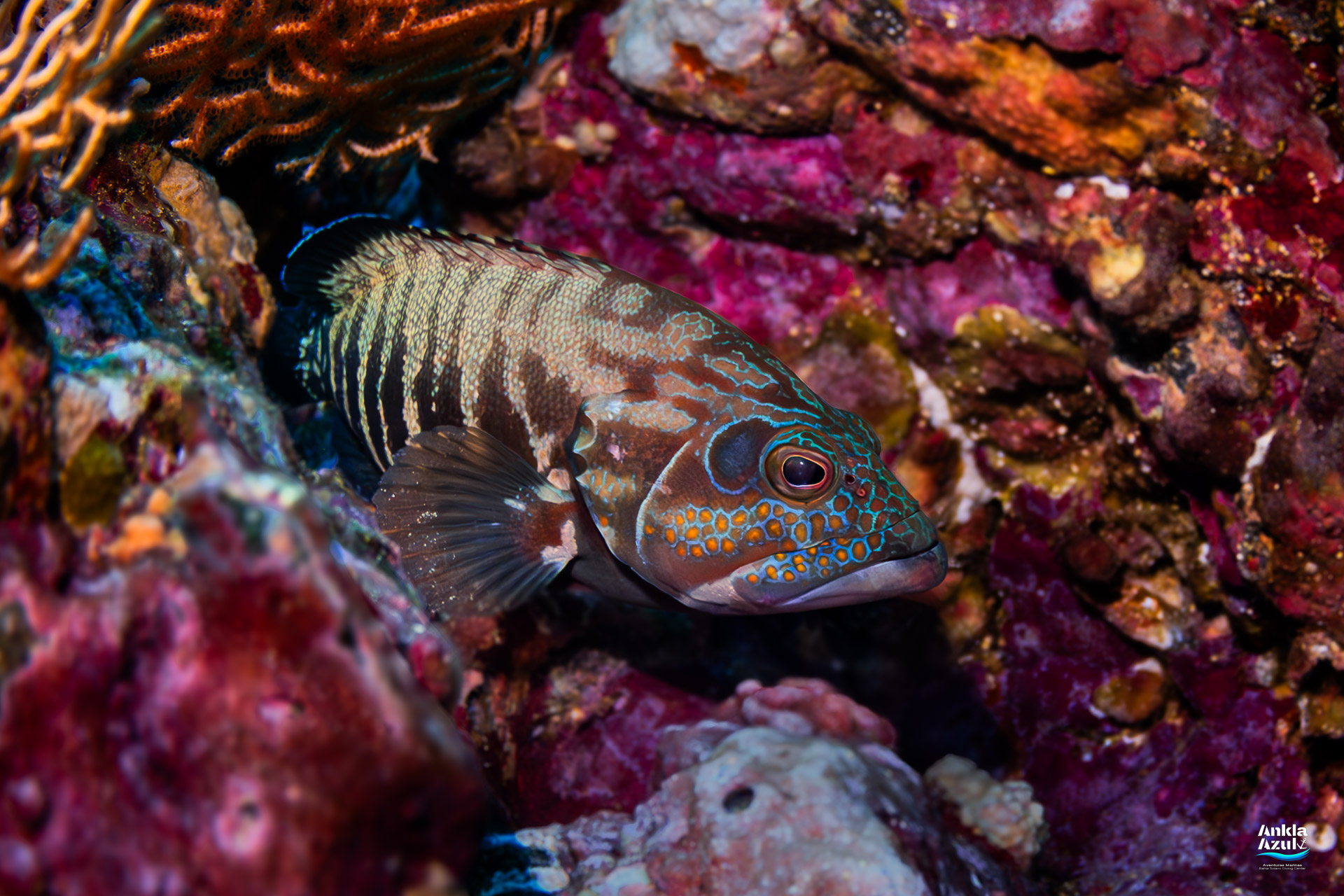Panamic Graysby
Cephalopholis panamensis
Family: Sea Basses & Groupers (Serranidae)
Size: Up to 30 cm (12 in)
Depth: 3 – 76m (10 – 250ft)
Distribution: Gulf of California to Ecuador (including Malpelo & Galapagos).
Identification:
A small but vibrant grouper that brings color to the darker rocky reefs.
- Adult Phase: The body ranges from olive-green to reddish-brown, covered in distinct small blue spots. The hallmark feature is the set of 3 or 4 pale spots along the base of the dorsal fin.
- Similar Species: Often mistaken for the Pacific Creolefish. The Graysby is stockier, has larger blue spots, and lacks the distinct stripes of the Creolefish.
Behavior:
A solitary ambush predator. Unlike the schooling Snappers, the Graysby prefers to hug the substrate, hiding in caves or under ledges during the day. They are curious but shy—if you approach slowly, they will often turn sideways to watch you.
You just learned about this fish…
NOW COME SEE IT!
Behind the Lens
Jalvan
Underwater Photographer & Instructor
Documenting unique marine biodiversity from the Red Sea across the Pacific Ocean. Dedicated to creating a visual catalog of Bahia Solano’s marine life for conservation and research.
Video: Osmo Action 5 Pro | GoPro
Follow my work:

REFERENCES & DATA SOURCES
-
Scientific ID: Verified via FishBase (Froese & Pauly, 2024).
-
Field Guide: Reef Fish Identification: Baja to Panama (Humann & DeLoach).
-
Conservation Status: IUCN Red List (Least Concern).
-
Regional Data: Ankla Azul Marine Observation Log (Bahia Solano).
More Than Kicking Your Fins
At Ankla Azul, diving is more than kicking your fins. It’s patient teaching, sharp safety, and real care for the place we call home. As an SSI Instructor Training Center and an SSI Blue Oceans Center (2025 award), we blend skill-building with ocean awareness—Fish ID, coral nursery work, community education, and rescue support—so every dive grows confidence and respect for Bahía Solano’s wild Pacific.


